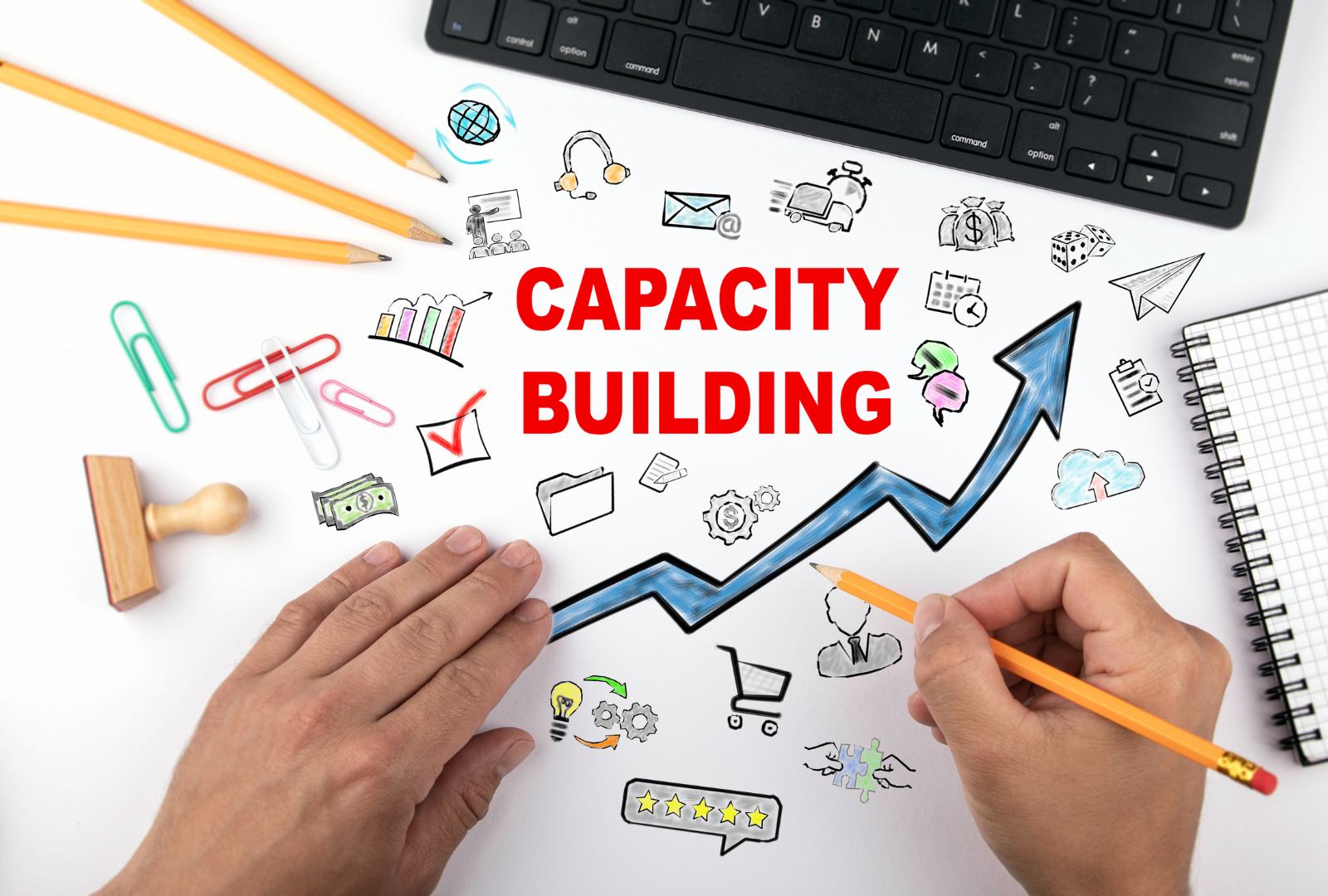Capacity building has become increasingly popular in recent years, particularly in organizational development, individual growth, community empowerment, and sustainability. In simple terms, capacity building means improving your skills, knowledge, processes, systems, and resources in a way needed in this fast-paced world to adapt, meet needs, stay trendy, and thrive. It is a broad concept that can lead to misunderstandings about its exact meaning. This blog aims to unpack its myth, explore its key components, and highlight its importance.

Capacity Building Explained
Capacity Building covers a vast area, ranging from growth to resilience. It’s not about short-term goals or bridging short-term gaps. It is more about creating sustainable solutions for businesses, processes, and systems while empowering humans, business owners, and employees to find solutions for their challenges and long-term goals. It is crucial for any industry and any setting.
3. Key Dimensions of Capacity Building
Capacity building involves the process of developing and strengthening the skills, abilities, and resources that individuals, organizations, and communities need to thrive and adapt to changing environments. It encompasses several key dimensions:
1. Individual Capacity Building
Improving human skills and knowledge in their work area will help them be more effective in their job responsibilities, such as developing leadership skills for emerging leaders or teaching farmers about sustainable agriculture processes.
2. Organizational Capacity Building
This focuses on improving an organization’s internal systems and processes to maximize its effectiveness, reach its goals, and attain sustainable growth while retaining its success and profit. Examples include implementing new technologies, introducing governance, and upskilling staff to the latest regulations.
3. Community Capacity Building
This is for building and strengthening the local, cultural, social, and economic of a specific group and building a community where it is safe, and a sense of belonging is created. Community members own the process and actively support each other for a better life for each community member.
5 Principles of Capacity Building
This is not a one-size-fits-all approach, as I always allude to. Below list is the framework of effective capacity building:
- Sustainability: The goal is to adopt and use the new skills process effectively and professionally. It focuses on long-term implementation and adoption and on having a tangible impact on humans and their daily lives. It needs to be valuable and practical.
- Participation and Ownership: The most important part is that the change and upskilling need to be done with them and not to them. Active involvement and engagement are key to sustainable change and one of the key cornerstones of Capacity Building.
- Tailored approach: As mentioned already, one size fits all does not exist. Each human and organization have unique strengths and challenges, and the culture and background differ for each. Thus, providing equity is crucial. This means that learning shall consider all aspects of where the organization of the humans stands and their existing knowledge, as well as assess the fundamental gaps to support them in a way that makes sense to them and their organization.
- Holistic View: Looking at the bigger picture and having a 360-degree view of the desire to foster growth. For instance, improving education in a rural area might also mean improving transportation and nutrition, not only education.
- Collaboration: Capacity Building is most effective when it involves partnerships and alliances with different organizations and humans who are experts in their own fields and across sectors.

Why Is It Important?
I firmly believe it is critical and crucial that any organizations, business, and humans focus on capacity building in this fast-paced world. By providing the right tools and techniques, we help communities and entities become more resilient and resourceful, like teaching someone to fish instead of giving them a meal. This promotes sustainable growth, addresses important issues like climate change, and supports marginalized communities while keeping up with new technologies. Capacity building also enhances adaptability, helping people and organizations stay calm, flexible, and goal-focused amid changes.
How to Get Started
Start capacity building by focusing on opportunities for growth and identifying areas where improvements will have the greatest impact. Approach the process with flexibility, ensuring actions are adaptable to changing circumstances. Foster collaboration and maintain momentum by celebrating progress and learning from challenges to drive sustainable development.
- Assess the needs
- Set clear goals
- Engage key stakeholders, partners and peers
- Create an action plan – quick wins – mid term and long term actions
- Leverage on your network
- Do it – implement and adopt
- Reflect, reset, rinse and repeat or change
Conclusion
Capacity building is more than just teaching, learning and the like. It is focusing on adopting the new learnings, making sure it is useful and addresses the needs of the individual and the organizations. It is a manner of upskilling the capabilities to address any challenges that might happen. By prioritizing on sustainable learnings, participation and adaptability and required follow up, it is the pathway for better equipped and resilient world which has social impact.

Do you need help?
Capacity building is the way forward in this ever changing and fragile world. Delighted to hear your thoughts. Just reach out.
